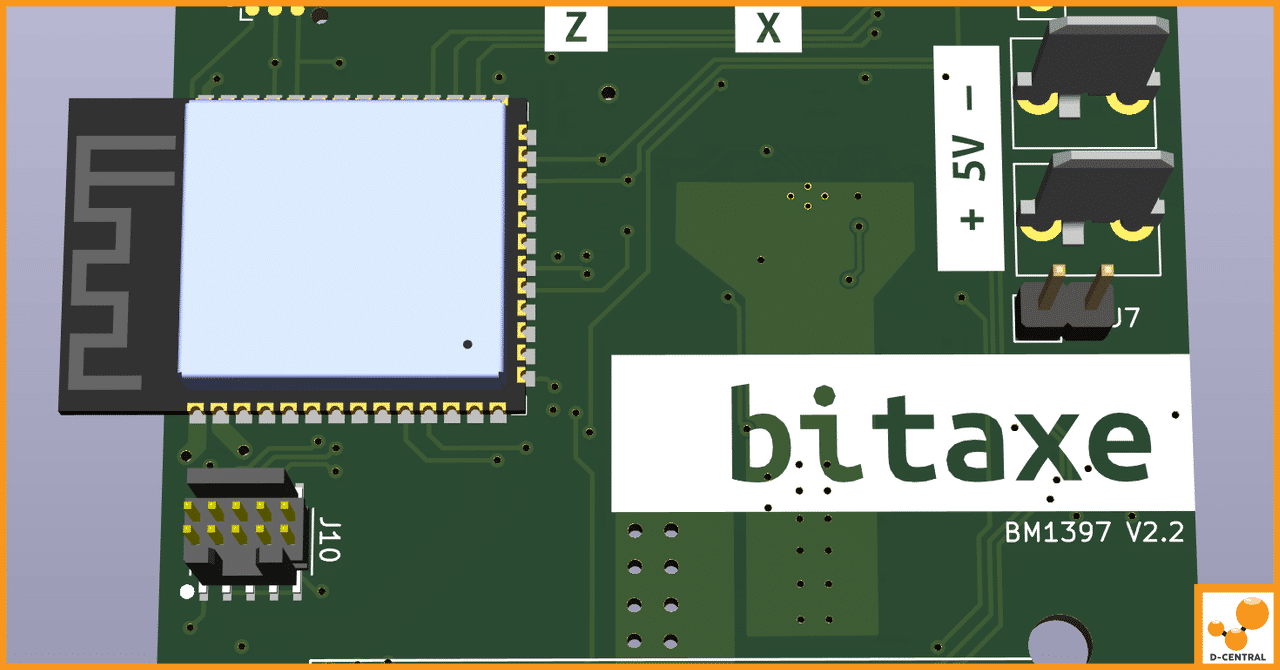
Guide to Common Antminer Repair Questions: Solutions, Tips, and Maintenance
Antminers, developed by Bitmain, stand at the forefront of cryptocurrency mining technology. These specialized devices, known as Application-Specific Integrated Circuits
4479 Desserte Nord Autoroute 440, Laval, QC H7P 6E2

In the world of digital currencies, where security and transparency are paramount, certain concepts play pivotal roles in maintaining system integrity. One such concept is the “preimage”, a term that might not be familiar to many, but is undeniably instrumental in the functioning of cryptocurrencies like Bitcoin.
Essentially, a preimage is the original input data that is processed through a hash function to yield a unique output known as a “hash”. It’s akin to a digital fingerprint, providing a unique identifier for any given set of data. The importance of preimages extends beyond their role in creating unique hashes. They are vital elements in ensuring secure transactions, forming the basis of complex systems like Bitcoin and the Lightning Network.
In the quest to fully grasp the dynamics of Bitcoin, understanding the role of preimages is fundamental. As you delve deeper into the architecture of this revolutionary digital currency and its derivatives, the functionality and significance of preimages become increasingly apparent.
In this comprehensive guide, we will explore the fascinating realm of preimages, their involvement in hash functions, their integral role in Bitcoin transactions, and their application in the Lightning Network. With this knowledge, we can better appreciate the complex mechanisms that maintain the security and efficacy of our digital transactions.
Hash functions are foundational to the functioning of digital currencies like Bitcoin. But what exactly is a hash function?
At its core, a hash function is a special type of function used in cryptography. It takes an input, or ‘preimage’, and returns a fixed-size string of bytes, typically in the form of a ‘hash code’ or simply a ‘hash’. The output is unique to each unique input — change even a tiny part of the original preimage, and the output hash will be entirely different. This sensitivity to input changes is known as the ‘avalanche effect’.
One defining feature of hash functions is their ‘one-way’ nature. This means that while an input produces a specific hash, you cannot reverse the process. That is, given a hash, there’s no feasible way to deduce the original preimage. This one-way property of hash functions makes them ideal for ensuring data integrity and security.
In simpler terms, think of a hash function like a high-tech shredder: you can put a document (the preimage) into the shredder and get out a pile of confetti (the hash). However, you can’t take that confetti and reconstruct the original document.
Hash functions are crucial in the blockchain technology that underlies Bitcoin. They’re used to write new transactions into the blockchain through the mining process, and they’re an integral part of how transactions are processed. Understanding the one-way nature of these functions gives us a glimpse into the complex machinery that drives digital currencies and secures digital transactions.
So, we know that a hash function transforms an input into a unique output, but where do preimages come into play?
In the context of hash functions, the term “preimage” refers to the original data that is input into the function. This could be any data— a string of text, a digital file, or a complex set of data points. When we put a preimage into a hash function, we get a unique hash code as the output.
Each unique preimage yields a unique hash. That means if you change even the smallest detail in the preimage, the output hash changes drastically. This property is called preimage resistance and is fundamental to the security offered by hash functions.
Importantly, hash functions are designed in a way that it’s practically impossible to reverse-engineer the original preimage from the resulting hash. This one-way nature preserves the confidentiality of the original data while allowing it to be securely verified, which is a fundamental requirement in cryptographic systems.
Preimages and their corresponding hashes establish a secure, verifiable “commitment” to specific data. The hash can be publicly shared as a commitment to that data without revealing the data itself. To validate the commitment, the original preimage is revealed and re-hashed. If it generates the same hash, the data is confirmed to be the same. This process forms the backbone of data integrity and secure transactions in blockchain systems, including Bitcoin and the Lightning Network.
To sum up, preimages are the cornerstone of hash functions. By converting preimages into unique hashes, we can make digital commitments that maintain the security and transparency of complex systems like Bitcoin. Understanding the role of preimages in hash functions is essential to grasp the mechanisms underlying Bitcoin transactions and mining.
Bitcoin, the leading cryptocurrency, is an excellent example of how the concept of preimages can be applied in practical, innovative ways. In Bitcoin’s intricate system, preimages play a crucial role in forming Bitcoin addresses and block headers— two elements at the heart of Bitcoin’s operations.
Bitcoin Preimages and Bitcoin Addresses
A Bitcoin address is like a digital destination for a Bitcoin transaction. But what makes up a Bitcoin address? The answer lies in the preimage-hash relationship. In essence, a Bitcoin address is created by taking the hash of a public key – the public key here acts as the preimage.
The hash of the public key (Bitcoin address) is shared publicly. The private key associated with the public key is kept secret. When someone wants to send Bitcoins, they send it to the Bitcoin address. The receiver can access the Bitcoins sent to an address using the private key. Thus, the public key is the preimage, and the Bitcoin address is the hash.
Preimages and Block Headers
Preimages are also instrumental in creating block headers, a vital component of Bitcoin’s blockchain. In the Bitcoin blockchain, a block header is the preimage for a block’s Proof-of-Work, which is a hash.
The Proof-of-Work is a crucial part of the Bitcoin mining process. Miners must solve a complex mathematical problem to create a new block and add it to the blockchain. This problem involves finding a specific hash – the Proof-of-Work.
The miners vary the data in the block header, the preimage, to generate different hashes. When a miner finds a hash that satisfies certain conditions (it must be lower than a certain target value), they’ve found the Proof-of-Work and can add the new block to the blockchain.
Thus, in both Bitcoin addresses and block headers, preimages form the basis of essential functions, enabling secure transactions and the expansion of the blockchain. Through this symbiotic relationship, Bitcoin leverages the power of preimages to create a secure, verifiable digital currency system. Understanding this connection is key to comprehending the intricacies of Bitcoin and its revolutionary blockchain technology.
In the world of Bitcoin transactions, preimages serve a vital role as ‘commitments. But what does this term mean, and how do preimages fit into the picture?
In cryptographic and blockchain contexts, a ‘commitment’ refers to a promise or obligation that is securely preserved and cannot be changed once made. When a Bitcoin transaction is executed, it essentially represents a commitment between the sender and the receiver.
Preimages function as these commitments in Bitcoin transactions. Remember, a Bitcoin address is created by hashing a public key, where the public key serves as the preimage. When Bitcoin is sent to an address, it essentially commits the Bitcoin to that specific public key.
This commitment takes place without revealing the public key (preimage) itself. The hash, which is the Bitcoin address, can be shared publicly without fear of anyone reverse-engineering the original public key because of the one-way nature of the hash function.
It’s only when the receiver of the Bitcoin uses their private key to sign a transaction, proving they control the public key associated with the address, that the commitment is fulfilled. Thus, Bitcoin transactions embody secure commitments to preimages, ensuring that the system is robust against fraud and maintains the privacy of users.
This elegant use of preimages as commitments in Bitcoin transactions is an example of the groundbreaking potential of cryptographic concepts in the realm of digital currencies. By understanding these processes, we can appreciate the complex mechanisms that make Bitcoin a secure and transparent financial system.
Understanding the theory behind preimages and their role in Bitcoin transactions is one thing, but let’s delve into a practical example to see these principles in action.
Let’s imagine Alice wants to send some Bitcoin to Bob. Alice knows Bob’s Bitcoin address, which, as we know, is a hash of Bob’s public key.
In this scenario, Bob’s public key is the preimage—the ‘original form’ that was transformed into the Bitcoin address. Alice sends her Bitcoin to Bob’s address, effectively making a commitment to Bob’s public key, without ever seeing or needing to know the public key itself.
On Bob’s end, he sees that Bitcoin has been sent to his address. To access it, he needs to use his private key to sign a transaction. This signature demonstrates proof that he controls the public key associated with the Bitcoin address and fulfills the commitment Alice made to his public key.
Thus, Bob can safely receive his Bitcoin, and the transaction integrity is maintained through the use of preimages and the one-way hash function. The transaction can be publicly verified on the blockchain, but the original preimage (Bob’s public key) remains private, demonstrating the secure and transparent nature of Bitcoin transactions.
This example underscores how preimages work in the context of a Bitcoin transaction. It showcases the elegant integration of cryptographic principles with practical applications, helping to foster trust, security, and privacy in digital financial transactions. Understanding these operations is key to navigating the world of Bitcoin and other cryptocurrencies.
While preimages play an important role in the operation of Bitcoin, their function extends further into the broader cryptocurrency ecosystem, notably the Lightning Network. This second-layer protocol is built on top of Bitcoin’s blockchain, enabling faster and cheaper transactions. Within this network, preimages have a pivotal role in securing payments, specifically within Lightning invoices and Hashed Time Locked Contracts (HTLCs).
Lightning Network Preimages and Lightning Invoices
In the Lightning Network, when a Lightning invoice is paid, the preimage serves as proof of payment. This invoice is essentially a request for payment, which includes the amount to be paid, a description of the payment, and a ‘payment hash’. The payment hash is created by hashing a random number or a ‘payment preimage’.
When the invoice is paid, the payment preimage is revealed to the payer. Since this preimage hashes to the payment hash in the invoice, its revelation serves as undeniable proof that the payment was made.
Preimages and Hashed Time Locked Contracts (HTLCs)
Furthermore, preimages are integral to the operation of Hashed Time Locked Contracts (HTLCs) within the Lightning Network. Essentially, HTLCs are a type of smart contract that ensures that a payment is securely routed across potentially multiple parties in the network.
When a transaction is initiated, the payer sends the HTLC, which contains the payment hash, to the routing nodes in the network, who forward it to the receiving node. The receiving node, who knows the payment preimage, can then claim the payment by revealing the preimage to the routing nodes.
This method of utilizing preimages guarantees the safety of multi-hop payments. Each intermediary in the payment chain gets the same guarantee: they will either get paid the forwarding fee or nothing, eliminating the risk of being left unpaid.
By utilizing the principle of preimages and hash functions, the Lightning Network provides a way to conduct secure, efficient, and fast transactions on top of the Bitcoin network. Understanding the role of preimages within this system can provide valuable insights into the advanced features and capabilities of the evolving cryptocurrency landscape.
In the Lightning Network, preimages aren’t just theoretical components—they play a fundamental role in the actual mechanics of routing and securing payments. By guaranteeing secure multi-hop payments across nodes, preimages ensure the network operates smoothly and reliably.
The journey of a payment in the Lightning Network often involves multiple hops. For example, if Alice wants to send a payment to Bob, but they don’t have a direct channel open, the payment might need to route through several intermediate nodes. In each of these steps, preimages are key to securing and verifying the payment.
Securing Lightning Network Payments with Preimages
When Alice initiates a payment, she creates a Hashed Time Locked Contract (HTLC) and sends it to the first routing node. The HTLC is essentially a promise to pay the node a fee for routing the payment, secured by a payment hash—the hash of a secret preimage Alice generates.
The routing node, unable to decipher the preimage from the hash due to the one-way nature of hash functions, forwards the HTLC to the next node, and so on, until it reaches Bob. This propagation of the HTLC through the network, with each node unaware of the secret preimage, ensures the payment’s security during transit.
Bob, who knows the secret preimage, reveals it to the last routing node. Since the preimage hashes to the payment hash in the HTLC, it serves as undeniable proof that Bob has received the payment, and the HTLC is settled.
The routing node uses the preimage to claim the fee from the previous node in the chain, and the process repeats backward through the route. Thus, all nodes are compensated, and Alice’s payment reaches Bob, all without revealing the preimage until the payment is successfully received.
This innovative use of preimages underscores the power and potential of the Lightning Network, enabling faster, more efficient, and secure Bitcoin transactions. As the Lightning Network continues to evolve and mature, the role of preimages in securing payments will continue to be a central part of its operating mechanism. Understanding these processes can offer deeper insights into the innovative ways cryptography can enhance digital transactions and monetary systems.
Throughout this exploration of preimages in the context of Bitcoin and the Lightning Network, we have witnessed their vital role and significance in securing digital transactions. Preimages form the foundation of hash functions, acting as original inputs that generate unique hash outputs. Their one-way nature ensures the confidentiality and integrity of data, providing a secure framework for cryptographic systems.
In Bitcoin, preimages are utilized in the creation of Bitcoin addresses and block headers, serving as commitments to specific data without revealing the original information. They enable secure transactions, maintaining the privacy of users while facilitating verifiability on the blockchain. The Lightning Network further leverages preimages to ensure secure multi-hop payments through Lightning invoices and Hashed Time Locked Contracts (HTLCs). Preimages serve as proof of payment, allowing the network to route payments across nodes while maintaining the confidentiality of the underlying transactions.
The role of preimages in Bitcoin and the Lightning Network highlights the ingenious integration of cryptographic concepts into the realm of digital currencies. By harnessing the power of preimages, these systems achieve enhanced security, privacy, and efficiency in handling transactions. As the technology continues to evolve, preimages will remain essential in maintaining the trust and integrity of these innovative financial systems.
Understanding the role and importance of preimages empowers individuals to navigate the complexities of Bitcoin, blockchain, and the Lightning Network. As we embrace the potential of decentralized digital currencies, preimages stand as unsung heroes, working behind the scenes to provide the robustness and reliability needed for a secure financial future.
Question: What is a preimage in the context of Bitcoin?
Answer: A preimage is the original input data that is processed through a hash function to yield a unique output known as a ‘hash’. They are vital elements in ensuring secure transactions, forming the basis of complex systems like Bitcoin and the Lightning Network.
Question: How does hash functions work?
Answer: A hash function is a special type of function used in cryptography. It takes an input, or ‘preimage’, and returns a fixed-size string of bytes, typically in the form of a ‘hash code’ or simply a ‘hash’. This sensitivity to input changes is known as the ‘avalanche effect’.
Question: What role do preimages play in Bitcoin transactions?
Answer: In Bitcoin’s intricate system, preimages play a crucial role in forming Bitcoin addresses and block headers— two elements at the heart of Bitcoin’s operations.
Question: How are preimages used in the Lightning Network?
Answer: In the Lightning Network, preimages have a pivotal role in securing payments, specifically within Lightning invoices and Hashed Time Locked Contracts (HTLCs).
DISCLAIMER: D-Central Technologies and its associated content, including this blog, do not serve as financial advisors or official investment advisors. The insights and opinions shared here or by any guests featured in our content are provided purely for informational and educational purposes. Such communications should not be interpreted as financial, investment, legal, tax, or any form of specific advice. We are committed to advancing the knowledge and understanding of Bitcoin and its potential impact on society. However, we urge our community to proceed with caution and informed judgment in all related endeavors.
Related Posts

Antminers, developed by Bitmain, stand at the forefront of cryptocurrency mining technology. These specialized devices, known as Application-Specific Integrated Circuits

Bitcoin mining is a crucial component of the Bitcoin network. It involves solving complex mathematical problems to validate transactions and

In the exciting world of cryptocurrencies, Bitcoin stands as the pioneering and most prominent digital asset. At the heart of